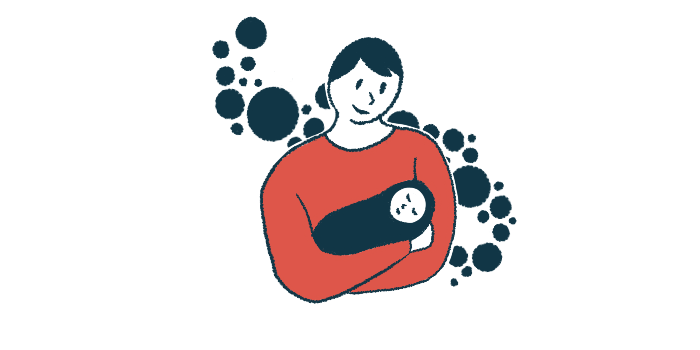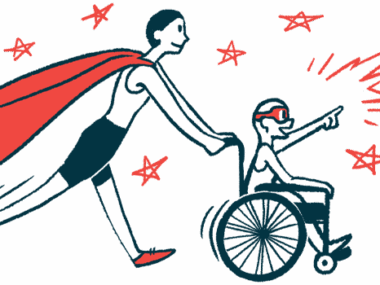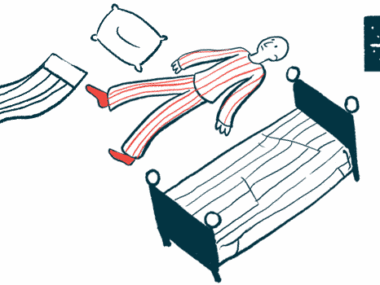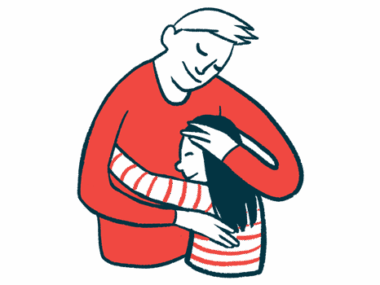Nighttime monitoring devices used often by Dravet caregivers: Study
75% of parents utilize tools to detect seizures, prevent SUDEP during sleep
Written by |

Nighttime monitoring devices are used by most Dravet syndrome caregivers — at least 75% — to detect seizures and prevent sudden unexpected death in epilepsy, or SUDEP, according to the results of a questionnaire-based study in Germany.
Such monitoring is important because, statistics show, children with Dravet have a much greater risk of death due to seizures, especially at nighttime.
Among the caregivers who monitored their children, most reported having averted a previous critical event through nighttime monitoring. One-fifth of caregivers said their child had experienced a heart or respiratory arrest that required resuscitation, with most events being linked to a seizure.
While knowledge about SUDEP — a phenomenon in which some patients die during or after a seizure for no apparent reason — was adequate among caregivers, less than half had proper resuscitation training, though most said they would welcome it.
The study, “Critical incidents, nocturnal supervision, and caregiver knowledge on SUDEP in patients with Dravet syndrome: A prospective multicenter study in Germany,” was published in the journal Epilepsia.
Monitoring habits, SUDEP knowledge is focus of caregiver questionnaire
Dravet syndrome is a severe type of epilepsy with symptoms typically emerging in the first year of life. It is marked by status epilepticus, which refers to seizures lasting longer than five minutes, or many seizures occurring close together without the patient recovering between them.
SUDEP is a particular concern in Dravet, as it occurs 15 times more frequently in these patients as compared with individuals with other forms of childhood epilepsy.
A primary risk factor for SUDEP is generalized tonic-clonic seizures, also known as grand mal seizures, especially during sleep.
Given these risks, parents and other caregivers have employed varying methods of monitoring their child’s sleep, with an aim of “risk mitigation,” the researchers noted.
“However, there is no consistent information about the efficacy of monitoring,” the team wrote.
“On one hand, caregivers believe that monitoring can prevent SUDEP, and it thus decreases their anxiety; on the other hand, frequent false alarms can result in sleep deprivation and can be frightening, which can increase anxiety and depression,” they added.
To learn more about this issue in the real world, researchers across Germany asked caregivers of Dravet patients to complete a questionnaire focused on nocturnal supervision, knowledge about SUDEP and resuscitation, and the occurrence of critical events.
To validate seizure frequency reported in the retrospective questionnaire, caregivers also were asked to keep a diary of seizures, monitoring, and emergency treatment over one month.
Caregivers of 108 patients — 55 females and 53 males — completed the questionnaire, and diaries were available for 82 patients or caregivers. The patients’ mean age was 13.5, ranging from 1.2 to 46.2 years. On average, these individuals experienced about eight seizure days per month, based on data from both the questionnaires and the diaries.
According to the caregiver-completed questionnaires, 71.4% of patients had seizures at night, with a mean frequency of about nine nocturnal seizures per month. These rates were slightly lower based on data from the diaries.
Overall, patients were taking between one and five antiseizure medications, or about three on average.
Nearly half of caregivers adversely affected by false alarms
Approximately three-quarters of caregivers reported using monitoring devices, with 89% of this group using them during sleep and 71% during or after seizures. Nearly 88% of caregivers used such devices daily or nightly.
The most commonly used devices included pulse oximeters, which monitor blood oxygen levels, and baby monitors, both used by about 65% of caregivers. These were followed by thermometers (24.1%), Epi-Care (26.8%), cameras (11%), epilepsy service dogs (2.4%), and seizure monitoring watches (1.2%). Epi-Care is a wrist-worn alert bracelet that detects tonic-clonic seizures.
“It is striking,” the researchers noted, “that many of the systems used by caregivers to monitor children with epilepsy are not intended as seizure-detection devices.”
In fact, they said, none of the methods used are ideal for detecting apnea, a possible predictor of SUDEP, or nonconvulsive seizures.
“Therefore, systems that monitor parameters independent from movements during an epileptic seizure should be developed,” they wrote.
One-third of patients slept in their parents’ bedroom, commonly in the same bed as their main caregiver, and all but four also used monitoring devices. Eight of the 26 caregivers who did not use any monitoring devices slept in the same bedroom as their child.
More than 84% of caregivers used monitoring devices to detect seizures, while 73% reported using them for reassurance. For 70% of caregivers, devices were used to detect life-threatening events.
A younger age for either parents or patients was associated with increased use of monitoring devices, as was a lifetime history of status epilepticus.
Seizure frequency, however, did not correlate with monitoring device use.
The definition of a false alarm varied among caregivers, with more than 62% defining it as technical problems. Only 25% defined it as an alarm that did not indicate a seizure. Nearly one-third of caregivers reported one or more false alarms per week. These instances led to a brief frightening (63.4%), sleep deprivation (50%), and anxiety (32.9%), among other issues, according to caregiver reports.
Researchers also found that caregivers spend as much as €3,500 (about $3,800) per year on monitoring devices, with nearly half being willing to pay more than €300 (about $325) per year for better monitoring. Although 47% said they would like better means of monitoring, 46% stated that nightly false alarms affected their quality of life and sleep.
Among those who did not monitor their child, three caregivers — about 3% — reported they would have used a monitor but did not have a prescription. Two did not receive health insurance reimbursement for it, and one did not know how to use it. Eight caregivers, representing less than 10% of those surveyed, said their patients did not tolerate the monitoring devices.
Monitoring helped prevent critical events for over 80% of caregivers
Critical events were defined as a deterioration in the patient’s condition that required acute care, such as pain stimulation, artificial breathing support, oxygen supplements, or chest compressions. Of the caregivers who monitored patients, 81% said they had averted a critical incident with nighttime monitoring.
Resuscitation due to cardiac or respiratory arrest occurred in 22 cases (20.4%), with 16 of these (72.7%) being linked to a seizure. Most events happened after a prolonged seizure, infection, or following seizure rescue medication, and resuscitation was primarily done by nurses and doctors.
Other nightly interventions reported by the caregivers to be necessary included suction, oxygenation, personal hygiene (such as going to the toilet), body position changes, and temperature checks. Caregivers also paid attention to their patient’s sleeping position and sleeping room temperature, and used special pillows and blankets.
Nearly all caregivers (94%) were well-informed about SUDEP, with 52% obtaining the information from the internet. Most caregivers stated they would have preferred to be informed about SUDEP by a doctor, and at the time of diagnosis.
Less than 40% of caregivers had been trained in resuscitation, while 53% were unsure of what to do in the event of heart or breathing failure. Yet 70% considered regular resuscitation training as essential.
“This study provides detailed information and insights into the daily lives of patients with [Dravet] and their caregivers, highlighting the use of monitoring devices by the majority of families, the high rate of critical incidents, and the reported need for resuscitation in addition to most caregivers’ adequate knowledge of SUDEP,” the researchers wrote.
The results also “indicate the need for further training in resuscitation,” they added.









